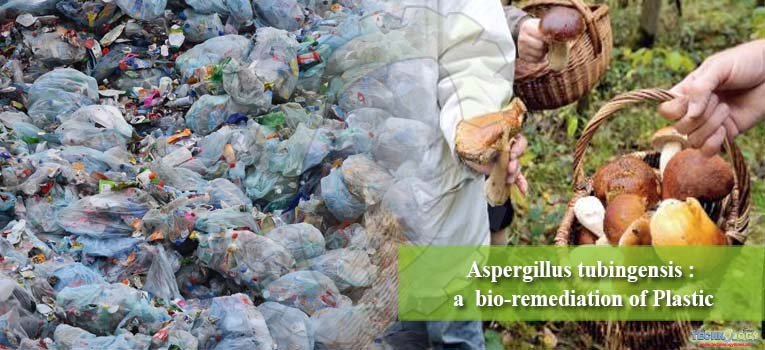Our planet is sinking in plastic. Bio-remediation an environmentally friendly approach by using newly discovered fungus can help us to save our planet!
 Today, thinking about a world without plastic is not possible. Pollution of plastic is a global issue because of a tremendous increase in its production and use. It is contaminating our terrestrial as well as the aquatic environment.
Today, thinking about a world without plastic is not possible. Pollution of plastic is a global issue because of a tremendous increase in its production and use. It is contaminating our terrestrial as well as the aquatic environment.
Due to high persistence and non-degradable nature, it is becoming a serious threat to the environment. Millions of tons of plastic are produced daily and dumped into the environment especially oceans. If trends will remain the same, then there will be more plastic than fish in the ocean by 2050.
- Bioremediation- cleaning tool
Bioremediation is a process which uses plants, microorganisms or their enzymes to remediate the pollution in the environment. It uses natural processes, cost-effective and converts the toxic pollutants into non-toxic compounds. It has been used worldwide due to its success.
- Aspergillus tubingensis– Plastic eating fungus
There are many species of fungi discovered which are “plastic hungry”. In 2011, Yale students isolated a species of fungi from Amazon. This fungus had the ability to grow on polyester polyurethane- manmade plastic.
One of the recent researches in the area of bioremediation is “Aspergillus tubingensis–plastic eating fungus”. Scientists discovered this fungus from the soil of a dumping area in Islamabad, Pakistan.
The main reason for gaining the attention of scientists is that it can grow on a film of plastic polymer-polyester polyurethane (PU).
A. tubingensishas the capability of biodegradation such as the formation of the pore, cracking and reduce tensile strength in PU film. This fungus secretes some enzymes which help to breakdown the bonds between plastic polymers. Mycelia of fungus also help to disrupt these polymers.
- Future Prospects
Bioremediation is a best and cheap tool to mitigate pollution of plastic and its polymers. More research is required in order to use the ability of Aspergillus tubingensis on a large scale and to increase its efficiency.
Moreover, there is a need to increase awareness among the public about limiting the use of plastic in their daily life and promote the use of recyclable materials. In short, be a part of the solution to beat plastic, not a part of pollution.